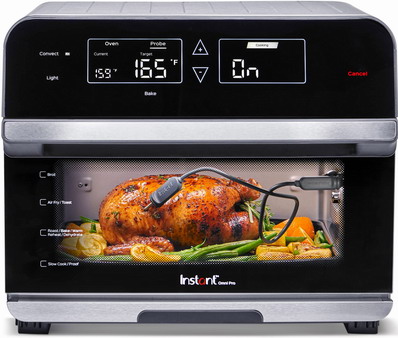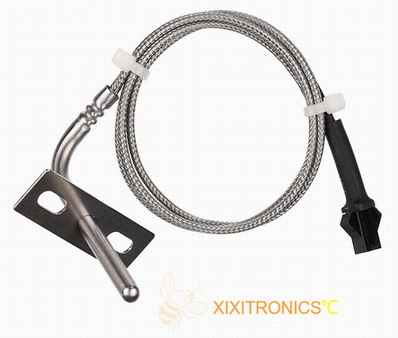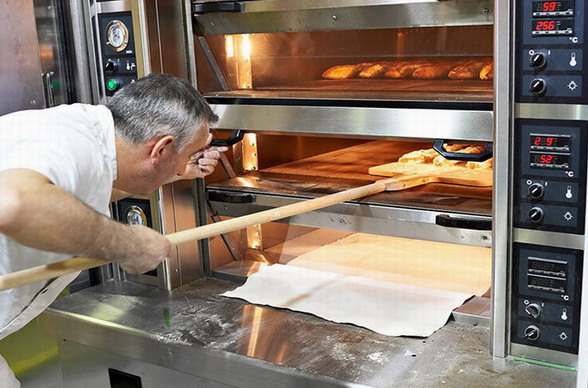Temperature sensors used in high-temperature household appliances such as ovens, grills and microwave ovens require extremely high precision and reliability in production, as they are directly related to the safety, energy efficiency, cooking effect and service life of the equipment. The key matters that need the most attention during production include:
I. Core Performance & Reliability
- Temperature Range & Accuracy:
- Define Requirements: Precisely specify the maximum temperature the sensor needs to measure (e.g., ovens up to 300°C+, ranges potentially higher, microwave cavity temperatures typically lower but heating rapidly).
- Material Selection: All materials (sensing element, insulation, encapsulation, leads) must withstand the maximum operating temperature plus a safety margin long-term without performance degradation or physical damage.
- Calibration Accuracy: Implement strict binning and calibration during production to ensure output signals (resistance, voltage) match actual temperature accurately across the entire working range (especially critical points like 100°C, 150°C, 200°C, 250°C), meeting appliance standards (typically ±1% or ±2°C).
- Thermal Response Time: Optimize design (probe size, structure, thermal contact) to achieve the required thermal response speed (time constant) for fast control system reaction.
- Long-Term Stability & Lifespan:
- Material Aging: Select materials resistant to high-temperature aging to ensure sensing elements (e.g., NTC thermistors, Pt RTDs, thermocouples), insulators (e.g., high-temp ceramics, specialty glass), encapsulation remain stable with minimal drift during prolonged high-temperature exposure.
- Thermal Cycling Resistance: Sensors endure frequent heating/cooling cycles (on/off). Material coefficients of thermal expansion (CTE) must be compatible, and structural design must withstand resulting thermal stress to avoid cracking, delamination, lead breakage, or drift.
- Thermal Shock Resistance: Particularly in microwaves, opening the door to add cold food can cause rapid cavity temperature drops. Sensors must withstand such fast temperature changes.
II. Material Selection & Process Control
- High-Temperature Resistant Materials:
- Sensing Elements: NTC (common, requires special high-temp formulation & glass encapsulation), Pt RTD (excellent stability & accuracy), K-Type Thermocouple (cost-effective, wide range).
- Insulation Materials: High-temperature ceramics (Alumina, Zirconia), fused quartz, specialty high-temp glass, mica, PFA/PTFE (for lower allowable temps). Must maintain sufficient insulation resistance at high temps.
- Encapsulation/Housing Materials: Stainless steel (304, 316 common), Inconel, high-temp ceramic tubes. Must resist corrosion, oxidation, and have high mechanical strength.
- Leads/Wires: High-temp alloy wires (e.g., Nichrome, Kanthal), nickel-plated copper wire (with high-temp insulation like fiberglass, mica, PFA/PTFE), compensation cable (for T/Cs). Insulation must be temperature resistant and flame retardant.
- Solder/Jointing: Use high-temp solder (e.g., silver solder) or solderless methods like laser welding or crimping. Standard solder melts at high temps.
- Structural Design & Sealing:
- Mechanical Strength: Probe structure must be robust to withstand installation stress (e.g., torque during insertion) and operational bumps/vibration.
- Hermeticity/Sealing:
- Moisture & Contaminant Ingress Prevention: Imperative to prevent water vapor, grease, and food debris from penetrating the sensor interior – a leading cause of failure (short circuits, corrosion, drift), especially in steamy/greasy oven/range environments.
- Sealing Methods: Glass-to-metal sealing (high reliability), high-temperature epoxy (requires strict selection and process control), brazing/O-rings (housing joints).
- Lead Exit Seal: A critical weak point requiring special attention (e.g., glass bead seals, high-temp sealant filling).
- Cleanliness & Contaminant Control:
III. Electrical Safety & Electromagnetic Compatibility (EMC) - Especially for Microwaves
- High-Voltage Insulation: Sensors near magnetrons or HV circuits in microwaves must be insulated to withstand potential high voltages (e.g., kilovolts) to prevent breakdown.
- Microwave Interference Resistance / Non-Metallic Design (Inside Microwave Cavity):
- Critical! Sensors directly exposed to microwave energy must not contain metal (or metal parts need special shielding), otherwise arcing, microwave reflection, overheating, or magnetron damage can occur.
- Typically use fully ceramic encapsulated thermistors (NTC), or mount metallic probes outside the waveguide/shield, using non-metallic thermal conductors (e.g., ceramic rod, high-temp plastic) to transfer heat to a cavity probe.
- Leads also require special attention for shielding and filtering to prevent microwave energy leakage or interference.
- EMC Design: Sensors and leads should not emit interference (radiated) and must resist interference (immunity) from other components (motors, SMPS) for stable signal transmission.
IV. Manufacturing & Quality Control
- Strict Process Control: Detailed specifications and strict adherence for soldering temp/time, sealing processes, encapsulation curing, cleaning steps, etc.
- Comprehensive Testing & Burn-in:
- 100% Calibration & Functional Test: Verify output within spec at multiple temperature points.
- High-Temperature Burn-in: Operate slightly above max working temp to screen early failures and stabilize performance.
- Thermal Cycling Test: Simulate real use with numerous (e.g., hundreds) of high/low cycles to validate structural integrity and stability.
- Insulation & Hi-Pot Testing: Test insulation strength between leads and between leads/housing.
- Seal Integrity Testing: E.g., helium leak testing, pressure cooker test (for moisture resistance).
- Mechanical Strength Testing: E.g., pull force, bend tests.
- Microwave-Specific Testing: Test for arcing, microwave field interference, and normal output in a microwave environment.
V. Compliance & Cost
- Compliance with Safety Standards: Products must meet mandatory safety certifications for target markets (e.g., UL, cUL, CE, GS, CCC, PSE, KC), which have detailed requirements for materials, construction, and testing of thermal sensors (e.g., UL 60335-2-9 for ovens, UL 923 for microwaves).
- Cost Control: The appliance industry is highly cost-sensitive. Design, materials, and processes must be optimized to control costs while guaranteeing core performance, reliability, and safety.


Summary
Producing high-temperature sensors for ovens, ranges, and microwaves centers on solving the challenges of long-term reliability and safety in harsh environments. This demands:
1. Precise Material Selection: All materials must withstand high temperatures and remain stable long-term.
2. Reliable Sealing: Absolute prevention of moisture and contaminant ingress is paramount.
3. Robust Construction: To resist thermal and mechanical stress.
4. Precision Manufacturing & Rigorous Testing: Ensuring every unit performs reliably and safely under extreme conditions.
5. Specialized Design (Microwaves): Addressing non-metallic requirements and microwave interference.
6. Regulatory Compliance: Meeting global safety certification requirements.
Overlooking any aspect can lead to premature sensor failure in harsh appliance environments, impacting cooking performance and device lifespan, or worse, causing safety hazards (e.g., thermal runaway leading to fire). In high-temperature appliances, even a minor sensor failure can have cascading consequences, making meticulous attention to every detail essential.
Post time: Jun-07-2025


